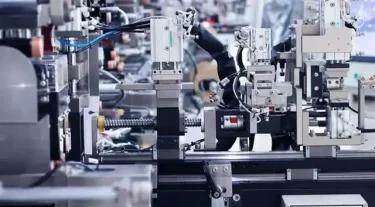
# Tape Production Process and Techniques
## Introduction to Tape Manufacturing
Tape manufacturing is a complex process that involves multiple stages to produce adhesive products for various applications. From everyday household tapes to specialized industrial adhesives, the production techniques have evolved significantly over the years to meet diverse requirements.
## Raw Materials Selection
The foundation of quality tape production lies in careful selection of raw materials:
– Backing materials (paper, plastic films, cloth, or foil)
– Adhesive compounds (rubber-based, acrylic, or silicone)
– Release liners and coatings
– Additives for specific properties
## The Tape Production Process
### 1. Backing Material Preparation
The process begins with preparing the backing material. For plastic films, this may involve extrusion or calendaring to achieve the desired thickness and properties. Paper backings undergo special treatments to enhance strength and moisture resistance.
### 2. Adhesive Application
There are several methods for applying adhesive to the backing material:
– Solution coating: Adhesive dissolved in solvent and applied
– Hot melt coating: Thermoplastic adhesive applied in molten state
– Water-based coating: Environmentally friendly alternative
– 100% solids coating: No solvents or water used
### 3. Drying and Curing
After application, the adhesive must be properly dried or cured:
– Solvent-based adhesives require evaporation in drying ovens
– Water-based systems need controlled drying conditions
– UV or electron beam curing for certain adhesive types
### 4. Lamination and Winding
The finished tape is laminated with release liners if needed, then wound into large rolls. Precision winding ensures uniform tension and prevents defects in the final product.
## Quality Control Measures
Stringent quality checks are implemented throughout production:
– Adhesion strength testing
– Thickness uniformity measurements
– Tensile strength evaluation
– Temperature resistance verification
– Aging and durability tests
## Advanced Manufacturing Techniques
Modern tape production incorporates innovative technologies:
– Nanotechnology for enhanced adhesive properties
– Micro-structured surfaces for special applications
– Multi-layer co-extrusion for complex tape structures
– Automated inspection systems for defect detection
## Environmental Considerations
Sustainable practices in tape manufacturing include:
– Reduction of solvent use
– Water-based adhesive systems
– Recyclable materials
– Energy-efficient production processes
– Waste minimization programs
## Future Trends in Tape Production
The industry continues to evolve with:
– Development of biodegradable tapes
– Smart adhesives with responsive properties
– Improved performance in extreme conditions
– Integration with digital technologies
From initial material selection to final packaging, tape manufacturing combines scientific principles with precision engineering to create products that serve countless purposes in our daily lives and industrial applications.
Keyword: tape manufacturing
0 thoughts on “Tape Production Process and Techniques”